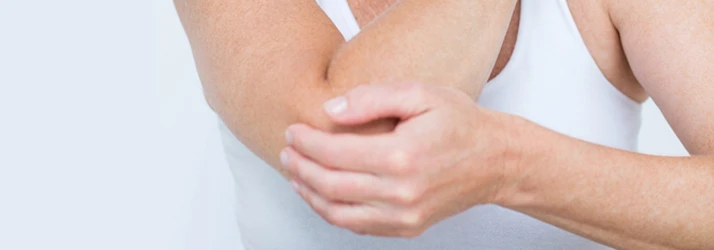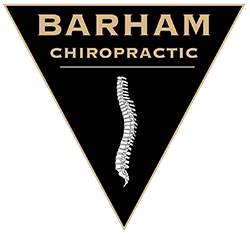How Chiropractic in Sacramento CA Helps Tennis Elbow

Sacramento CA Chiropractor Helps With Tennis Elbow
It’s a great day at Barham Chiropractic
Our Sacramento CA Chiropractor office has over 30 years of experience working with this type of issue and is here to serve up some valuable insights on tennis elbow.
In this short article, we are going to describe what tennis elbow is and how to treat and prevent it.
What is tennis elbow?
Tennis elbow, also known as lateral epicondylitis, is a condition that causes pain and discomfort in the outer part of the elbow. It's not just for tennis players - anyone can experience this pesky condition, from avid gardeners to dedicated keyboard warriors.
Imagine this: You've been spending hours on the tennis court, perfecting your backhand swing like a pro. But suddenly, you start feeling a nagging pain in the outer part of your elbow that just won't quit. That, my friend, could be tennis elbow making an unwelcome appearance in your life!
How do I know if I have tennis elbow?
There are several ways red flags you can have that may mean you are dealing with tennis elbow.
Some of the ways you can identify you have tennis elbow is if you experience one or more of these several key symptoms:
- Pain on the outer side of the elbow: The most common symptom of tennis elbow is pain that occurs on the outer side of the elbow. This pain may be mild initially, but can gradually worsen over time. It is typically felt when gripping objects, lifting, or performing repetitive wrist and hand movements.
- Weakness in the forearm: Tennis elbow can also result in weakness in the forearm muscles. You may notice difficulty in gripping the tennis racket firmly, as well as a decrease in your overall grip strength. One of our patients reported that he knew something was off because the racket slipped out of his hands and that had never happened before.
- Stiffness and discomfort: Tennis elbow may also cause stiffness and discomfort in the affected arm, particularly in the morning or after periods of rest. This can make it challenging to perform everyday tasks that involve gripping or lifting.
- Tenderness and swelling: Another common symptom of tennis elbow is tenderness and swelling around the outer side of the elbow. You may notice increased sensitivity to touch in this area, and there may be visible swelling or redness.
- Pain that worsens with activity: The pain associated with tennis elbow typically worsens with activity, particularly activities that involve repetitive use of the forearm muscles. This can include sports such as tennis, golf, or weightlifting, as well as certain occupational tasks that require repetitive gripping or lifting.
How do I prevent tennis elbow?
The best-case scenario with tennis elbow is preventing it altogether. Frankly, if you suffer from tennis elbow we often recommend that you consistently practice these 3 ways to prevent
- Stretching – For those who know their work or play will involve a lot of repetitive arm motions, stretching will be one of the best preventive measures against tennis elbow.
Good stretches include:- Straightening your arm with your elbow straight (as if you are telling someone to stop) and pulling your fingers back towards your body and hold it for 1 minute.
- Another stretch is to rotate your arm so that your palm is still facing forward but your fingers are pointing at the ground. Pull your fingers back towards your body and hold it for 1 minute.
- These stretches should be repeated up to 5 times per day.
- Stretching is generally healthy and works to strengthen these muscles over time.
- Squeeze and release exercise – Strengthening your wrist muscles will help to avoid tennis elbow.
Funnily enough, a great tool to accomplish this, is a tennis ball.- Grip a tennis ball in the hand of your injured arm. Squeeze and release the tennis ball for 2-3 minutes, 3-4 times a day. This will help circulate the blood in your forearm and elbow and hope build up strength in the muscles and ligaments in that area.
- Tennis elbow bracing - can be beneficial to reduce strain in and around the injured tendon until it heals.
- They work best when you are doing things that cause irritation to the elbow like gripping, lifting, repetitive typing, etc. Very often our patients at Barham Chiropractic, report that the reason they got tennis elbow in the first place is that they cant simply stop doing the motion that is causing it because it is part of an important hobby or work.
- We recommend they be removed when you’re not using the arm.
How do I treat tennis elbow?
When it comes to treating tennis elbow, the key is to address both the symptoms and the underlying cause of the condition. Here are some effective treatment options:
- Rest and Ice: Resting the affected arm and applying ice to the affected area can help reduce inflammation and provide relief from pain. It's important to avoid any activities that aggravate the condition during the healing process.
- Physical Therapy: Physical therapy can be highly beneficial in treating tennis elbow. A trained physical therapist can guide you through exercises and stretches that help strengthen the muscles and tendons in the forearm, reduce pain, and improve flexibility.
- Chiropractic Care: Chiropractic care can also play a role in the treatment of tennis elbow. A skilled chiropractor can use techniques such as soft tissue manipulation, joint adjustments, and mobilization to help reduce pain, improve joint function, and promote healing.
- Medications: Over-the-counter pain medications, such as nonsteroidal anti-inflammatory drugs (NSAIDs), can help reduce pain and inflammation associated with tennis elbow.
We recommend you ALWAYS consult with a healthcare provider before taking any medication, especially if you have any underlying health conditions or are taking other medications. - Bracing or Splinting: We already discussed this in the prevention section, but wearing a brace can help treat tennis elbow as well. Wearing a brace or splint on the affected arm can help provide support and reduce strain on the tendons, allowing them to heal. These devices can be worn during activities that typically trigger pain, such as gripping or lifting.
- Lifestyle Modifications: Making certain lifestyle modifications can also be beneficial in treating tennis elbow. Avoiding repetitive or strenuous activities that worsen the condition, using proper ergonomics and body mechanics during daily activities, and taking regular breaks to rest and stretch can help reduce strain on the affected tendons and promote healing.
- Education: Tennis elbow can be hard to deal with, but learning about what causes it and how to avoid it in the future can be very helpful. Learning the right way to warm up, using the right tools, and staying away from repetitive motions can help you avoid getting hurt again and speed up your long-term recovery.
At Barham Chiropractic, we have helped countless patients with tennis elbow, and we found that most patients have the fastest results when they did a combination of treatments and prevention practices.
How long does it take for chiropractic care to help tennis elbow?
The two main determining factors regarding how fast the elbow heals are usually, how severe the condition is, and how consistent the patient is with their care. Although chiropractic adjustments can often cause immediate pain relief, patients need to adhere to the care plan consistently (especially if they are wanting to stay in the court) to get long-term results.
If you or a loved one struggle with tennis elbow, please reach out to us during our office hours or by filling out the contact information on our New Patient Offer.
We would love to earn the opportunity to help you in your health journey.
Let’s take a swing back at tennis elbow!
References
A rational management of tennis elbow. Kamien M. Sports Med. 1990 Mar;9(3):173-91. Review.
Clinically reviewed by Steven Barham, D.C.
- Updated on April 08, 2023
This site is for informational and educational purposes only. The information contained herein does not constitute the rendering of insurance advice, chiropractic healthcare advice, or the provision of treatment or treatment recommendations by our providers. Browsing this site does not establish a professional relationship with Barham Chiropractic or any member of the Barham Chiropractic staff.
If you have any concerns, questions, or comments about this article please reach out to our content moderation team at:
barhamcontent@gmail.com
You can also reach out to our Sacramento CA Chiropractor Office via phone call at (916) 542-6273 during office hours.
OFFICE HOURS
Monday
7:15am - 11:45am
2:00pm - 5:45pm
Tuesday
8:00am - 11:45am
Wednesday
7:15am - 11:45am
2:00pm - 5:45pm
Thursday
8:00am - 10:45am
Friday
7:15am - 11:45am
2:00pm - 5:45pm
Saturday & Sunday
Closed
Barham Chiropractic
3441 Arden Wy
Sacramento, CA 95825




